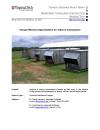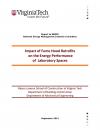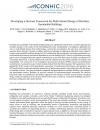Energy Efficiency Opportunities for Tobacco Curing Barns
Tobacco curing is an energy intensive process that has made some progress in automation, but overall has not significantly changed over the past decades. In this report the authors evaluated the most practical and also typical retrofit scenarios, such as envelope improvements and the installation of an automated control systems. In terms of their anticipated impact on energy savings the different opportunities ranged from around 6% for added control strategies to around 12% for typical standard envelope improvements.






